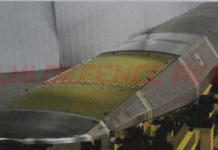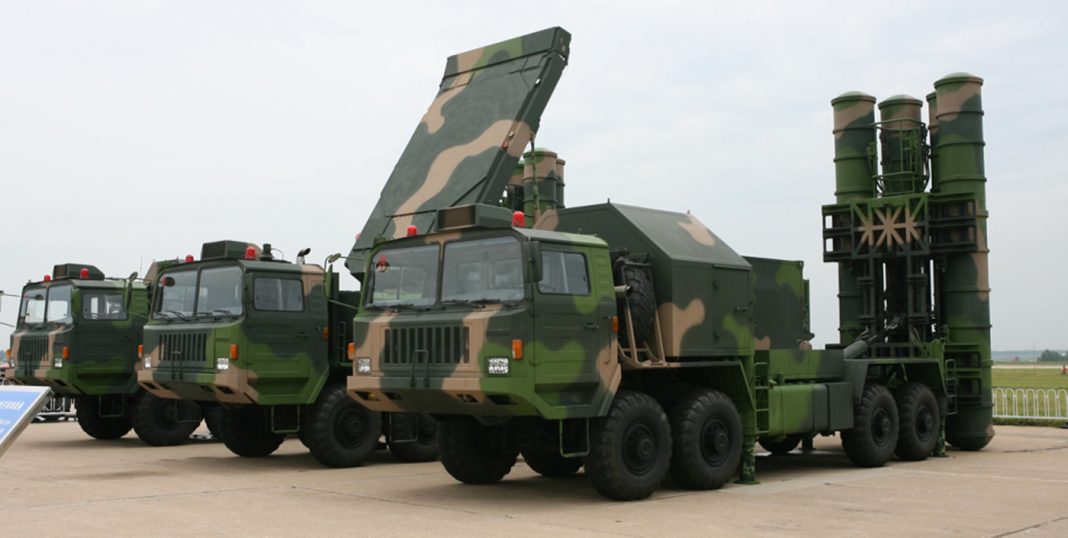Heading into the 1990s China’s air defence (AD) network had found itself straddled with a mass of obsolete equipment & failed modernization programs. China’s radar network at the time relied on 1950s Soviet equipment. The Airborne Early Warning & Control (AEW&C) program using a turboprop Tu-4 Bull airframe had been a non-starter and the People’s Liberation Army Air force (PLAAF), besides the thousands of obsolete copies of early Soviet Migs, had only a handful of indigenously developed fighter aircraft such as the Chengdu J-8 and a few Western radars. Leave aside the Western powers, China would have had problems defending its air space from most of its neighbors.
The following two decades, however, have seen China undertake a massive modernization drive. Today, even as China continues to modernize and upgrade a range of vintage equipment, it is also incorporating contemporary technologies often embedded in indigenously developed platforms and systems. A closer look at some of these new technologies is warranted given China’s quest to establish a credible multi-layered integrated AD system (IADS).
Surveillance Systems
Starting from the vintage 1950’s radars in service, China slowly improved its surveillance capability for most of the second half of the 20th century. It initially reverse engineered and then improved upon radars such as the Soviet P-12 Spoon Rest, as well as developing some unique indigenous ones such as the YJ-14 Great Wall.
During the 1990s, China initiated the development of a number of highly mobile and survivable AD radars, for use by both the national AD network as well PLA Ground Force (PLAGF) formations. Some of these, like the JL-3D, are technologically similar to those currently used by US, EU and Russian air defences. While China has procured and inducted Russian surface to air missile (SAM) systems, the primary search radars used by its IADS have been mostly designed and developed by China itself.
Another area of focus has been passive detection systems (PDS). The CETC DWL002 emitter locator system is an example of the same. Based on the Tamara series, it has the capability to locate targets three dimensions (3D), unlike the mostly 2D PDSs in service today. Incidentally, CETC DWL002 is also highly mobile and difficult to locate.
To showcase its ability to detect stealth aircraft, China has also showed off two anti-stealth radars at Zhuhai, in the past. One of these is the JY-27A 3-D long-range surveillance/guidance radar, which operates in the very high frequency (VHF) band and is actually the Chinese military’s first active-phased array radar. Unverified claims state that the radar can pick up hostile stealth fighters at ranges of up to 500 km. The second anti-stealth radar is the JY-26 Skywatcher-U which operates in both VHF and Ultra-High Frequency (UHF) bands and has a claimed range of 500 km as well. Some media reports have even suggested that China now has the ability to track American F-22 Raptors flying over South Korea.
A ‘Quantum radar’ is also reported to have been developed by China which will further enhance its anti-stealth surveillance capability. The details of this ‘quantum radar’ are still sketchy.
For the purpose of anti-ballistic missile (ABM) defence , China has developed a long-range early warning radar system, similar to the US PAVE PAWS, capable of detecting targets up to 5,500 kilometers away. Examples of this system are not just established at a space monitoring station in Heilongjiang province in the northeast region, but also in Xinjiang in China’s northwest and Fujian in the southeast.
In recent years, China has also managed to build one of the more advanced airborne surveillance capabilities in the world. Its KJ-500 AEW&C aircraft, based on Y-9 aircraft, carries new generation three sided fixed active electronically scanned array (AESA) Radars to provide continuous 360º radar coverage. This system is is considered more advanced than the Russian A-50 and US E-3C Sentry AWACS, by some.
China also has the KJ-200, which uses electronically steered active phased array radar technology that’s a couple of generations ahead of the legacy mechanically steered arrays.
Then there is the much larger KJ-2000 AWACS, which also uses an AESA primary radar and is directly modeled on Israel’s A-50I and Elta Phalcon radar. Some sources claim, that this radar operates in the same frequencies as Elta’s Phalcon, despite the fact that the US had halted the sale of the same to China by Israel.
All these various surveillance elements have been integrated into an ‘air intelligence radar network’ using fixed high speed fibre-optic links that provide interconnections that are immune to electronic intelligence intercepts and radio frequency jamming. Moreover, all mobile radars and missile batteries have been connected through indigenous TS-504 mobile tropo-scatter communications terminals.
Surface-to-Air Missiles
The PLA is equipped with a mixture of indigenous, Russian, and Western SAM systems for both regional and field AD roles. The upgradation of Chinese SAM systems was initially dependent on imports from Russia. Till date, Russia has delivered 160 S-300 PMU and S-300 PMU-1 and -2 launchers with their attendant radars, munitions, and support equipment.
By the mid-2000s, China had reversed-engineered Russian and Western technologies and incorporated elements of both the S-300 and Patriot batteries into its HQ-9 system, which has a range of approximately 200 km. Around the same time, PLA introduced the 50-km-range HQ-12 SAM. The new generation SAMs are more mobile and incorporate jamming-resistant technology. Since developing the HQ-9, China has stopped acquiring more S-300 units from Russia. It however purchased six battalions of Russia’s newest and most advanced long-range self-propelled SAM system, the S-400 Triumf. The S-400 reportedly includes an active electronically scanned array (AESA) radar and can target aircraft, cruise missiles, as well as tactical and ballistic missiles at ranges of up to 400 km
Even as it brings in the S-400, China’s own indigenous systems are now becoming competitive with the best in the world. Besides the HQ-9, the new HQ-22 is an all-weather medium-long range air defense weapon system that can engage 3rd generation fighters, armed helicopter and medium and high altitude unmanned aerial vehicles (UAVs), besides other aerodynamic targets. It is also mobile and has very good electronic counter counter measures (ECCM), HQ-22 can engage targets out to a range of 150-170 km and flying at altitudes from 50 to 27,000 metres.
The SAM inventory of China thus has a mix of vintage(albeit upgraded), imported and indigenous systems.
Designation Type Origin Introduction
HQ-2 Land-based SAM China 1960s
HQ-9 Land-based SAM China 2000s
HQ-12 Land-based SAM China 2000s
S-300PMU Land-based SAM Russia 1990s
S-400 Land-based SAM Russia 2016
HQ-61A Land-based SAM China 1980s
HQ-6 Land-based SAM China 2000s
HQ-7/A Land-based SAM China 1980s
HQ-16A/B Land-based SAM China-Russia 2010s
Tor M1 Land-based SAM Russia 1990s
Where China still lags
The two areas where China presently lags are aero engines and support aircraft. China, continues to rely on imported engines for its most advanced aircraft, including the J-10 fighter as well as the new-generation J-20 stealth fighter, which has been using Russian-made engines for most of its test flights. In terms of support aircraft (including tankers, transport planes, and electronic warfare planes) China may not have the required inventory but is steadily closing the gap.
A Sinified approach?
To narrow the technology gap, China is using a military R&D strategy that is very similar to its broader industrial one. It is basically taking Western and Russian technologies, and ‘Sinifying‘ them. The indigenous ‘Sinocanard’ J-10 fighter is just one such example. Interestingly, a study of Chinese sources reveals that there is a school of thought that China may not be in a hurry to develop 5th generation air superiority and mult-irole planes, such as the J-20 and J-31 given the tremendous expense and whether it is really worth the capabilities they offer. In any case, given current production rates China may well be on its way to possess the single largest pool of 4th generation combat aircraft in the world with newer airframes then what the US will have.
Conclusion
Sinifying Western and Russian technologies, China has built a formidable AD network that will become only more capable in the years to come and will prove to be very difficult to penetrate for most of its adversaries.
© Delhi Defence Review. Reproducing this content in full without permission is prohibited.
































